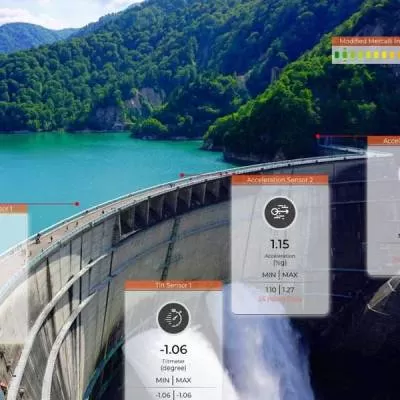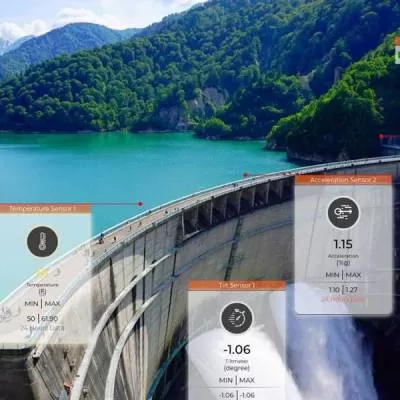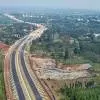- Home
- Technology
- Ground Realities
Ground Realities
Engineer Jagvir Goyal tells us more about the best equipment for geotechnical investigations.
All mega infrastructure projects need geotechnical investigations at the site of construction before evolving the design of various structures involved. A number of tests are required to be carried out for which a variety of equipment is required. Geotechnical investigations involve considerable fieldwork and laboratory experiments. The aim is to find the nature of substrata at a sufficient number of points so that the soil parameters and subsurface conditions for each individual structure are available after the finalisation of the layout.
Geotechnical investigations
The extent of geotechnical investigations that need to be carried out depends on the quantum of work and area involved, type of structures, their height and likely depth of their foundations below the ground level. For example, a thermal project would essentially have a tall chimney 220 m or 275 m in height. The foundations for such a structure would most likely be pile foundations, extending to 20 m or so below ground level. A hydro project may have its powerhouse base 20 m or more below the ground. A bridge may have pile or well foundations. The investigations are to be done in such a manner that a site gets suitably covered for erecting all structures. This generally involves the following: borehole investigations, trial pits, plate load tests, cone penetration tests, permeability tests, CBR tests, electrical resistivity tests, water sample tests and laboratory tests.
All these tests and investigations require standard and calibrated equipment. All observations along with laboratory investigations should be well presented in a report. Copies of the report should be preserved for reference during the entire construction of the project. The maximum amount of test results should be tabulated for easy reference in future.
The purpose of each test
The purpose of each investigation is as follows:
• Borehole investigations: These provide N-values for each stratum, at final depth and at every change of strata; undisturbed samples of soil at founding level and at every change of strata for preservation and further tests; disturbed samples of soil at founding level and at every change of strata for further tests; depth of groundwater table in each borehole; Piezometer record for each borehole showing daily changes in the groundwater table; types of soil in each stratum according to IS classification, standard penetration curve and all properties of soil.
• Trial pits: These provide undisturbed samples of soil; disturbed samples of soil; position of water table, if encountered; N-values at change of strata and base of pit; and densities of soil.
• Plate load tests: These give an idea of actual bearing capacity of soil at a level where the foundations are most likely to be rested.
• Cone penetration tests: Static cone penetration tests (SCPTs) and dynamic cone penetration tests (DCPTs) exactly determine the relative shear strength of soil and densities of various strata. SCPT continues till a specified capacity is reached while DCPT is continued till the refusal to penetration is met or desired depth is achieved. Results of the standard proctor compaction test help plot a curve between moisture content in per cent and dry density of soil in gm/cc as coordinates to determine the optimum moisture content of soil (OMC) and corresponding maximum dry density of soil.
• Permeability test: When conducted under constant head and falling head methods, this provides the coefficient of permeability of various soil strata.
• Field vane shear test: When conducted in various locations and depths, this tells us the shear strength of cohesion-less soils.
• CBR tests: California bearing ratio (CBR) tests result in plotting load Vs penetration curves to arrive at CBR values that are used in the design of pavements to be laid in the area.
• Electrical resistivity tests: These determine the electrical resistivity of soil.
• Water sample tests: These include chemical analysis of water samples to know its chloride content, sulphate content, pH value, organic matter content and other harmful salts content. These tests are done to check if the water is fit for drinking and for concrete production.
• Laboratory tests: These determine the characteristics of soil and water. The grain size distribution of soil, its shear strength, modulus of elasticity, liquid limit and plastic limit thus become known. Grain size analysis shows percentages of gravel, sand, silt and clay and soil classification for each sample.
These geotechnical investigations require a variety of equipment.
Drilling rigs
The availability of drilling rigs eases the geotechnical investigator’s job to a great extent. These can be hydraulically or pneumatically operated; truck or trailer-mounted. A diesel engine with a gear box for forward and reverse operation is used. The hydraulic system is energised by heavy-duty geared pumps connected to the power unit. An oil tank of large capacity, radiator cooling system and wire-braided hoses help a hydraulic system run smoothly. A clutch system is added to the rigs to shut off the system in an emergency and hold drilling operation.
Depending upon their capacity, drilling rigs can drill up to medium and deep depths; expedite soil sampling; help conduct DCPTs and SCPTs; facilitate vane shear tests in the field; and help in many other applications. These can be installed on most medium and heavy-duty vehicles. Reputed firms supply many accessories for these rigs, such as rods, casings, bits, SPT samplers, sampling tubes, monkey weights and cone test attachments. Hydraulically operated drilling rigs are more efficient and must figure on the fleet list of the geotechnical investigator.
Free fall hammers
Automatic free fall hammers prove very useful to conduct standard penetration tests and cone penetration tests accurately. An important factor for accuracy is that the impact energy for all blows is equal. Automatic free fall hammers ensure that. These hammers are provided with a proper guide system to keep the guide rod and drill rod in a vertical position. The height of fall of the hammer is also standardised. The base assembly, hammer guide assembly, hammer, anvil, ladder, tripod, drill rod and split spoon sampler are essential components of automatic free fall hammers. Dynamic cone and cone adapters are optional items for use in case the hammer is to be used to conduct DCPT too.
SPT apparatus
Standard penetration test (SPT) apparatus is essential for geotechnical investigations and is put to maximum use during soil investigations. The N values it gives help determine the degree of compactness of sandy soils and consistency of cohesive soils. These can even be used for design of foundations when plate load test results are not available. For earthquake resistance design too, N values are needed to help determine the resistance of soils to liquefaction under dynamic loads and ground vibrations.
An SPT apparatus consists of a guide pipe assembly, the tripod with pulley arrangement and ladder incorporated, the drill roads, the main body which is extendable through split lengths, the weight, the shoe with a cutting edge and a head, and the split spoon sampler. The split spoon sampler should conform to IS 9640 and the test should be conducted as per the procedure laid down in IS 2131.
DCPT apparatus
DCPT is another important test to get complete information on soil characteristics. It tells us the resistance of various types of soil when a 50 mm cone is penetrated through them. These resistance values indicate the relative strength and densities of soils. The equipment consists of a dynamic cone of 50 mm base diameter and cone angles of 60°, a cone adapter to couple the cone with the drill rod, a stand to keep the rods vertical, a guide assembly, a tripod with a built-in ladder, and a drive weight of 65 kg as required for SPT and drill rods. The cone can be threaded or plain. For deep depths, plain cones should be used while for shallow depths, threaded cones should be used. Plain cones are used for deeper depths as sometimes it becomes difficult to pull out the cone after the test. The test should be conducted as per IS 4968 Part I when bentonite slurry is not used and as per Part II when bentonite slurry is used.
SCPT apparatus
SCPT readings provide bearing capacity profile and shear strength profile of the soil. SCPT also helps find the load carrying capacity (LCC) of the piles as penetration resistance to its cone almost matches the actual load carrying capacity of pile per unit area of pile tip. SCPT cone has a base area of only 10 sq cm. The equipment consists of a penetration cone of base area of 10 sq. cm and 60° cone angles, mantle tubes, load measuring head, pressure gauges, screw anchors, trusses, extension pipes for handles, and extraction tubes. A pump-driven SCPT is preferred these days for constant and quicker soil penetration. The hydraulic pump used to drive the engine can be attached to the trolley on which the complete SCPT assembly is mounted. The test should be conducted as per the procedure laid in IS 4968 Part III.
PLT equipment
Conducting field tests for bearing capacity is essential to know the exact values as soil behaviour is sometimes unpredictable. Plate load test (PLT) results are considered so reliable that these sometimes act as a datum for other test results for calibration of values. PLT gives the ultimate bearing capacity of soil. It is conducted under ‘maintained load conditions’ and ‘cyclic load conditions’. Under cyclic load conditions, the load increments are removed to know the rebound values. As the load is increased gradually, a situation arrives when the test plate on which the load is being applied begins to settle at a rapid rate. This situation indicates the ultimate bearing capacity of soil.
PLT equipment consists of hydraulic jacks, hydraulic pumps fitted with calibrated dial gauges, plain and grooved MS plates of required area, high pressure bearing metallic flexible pipes, extension rods for dial gauges, columns, datum bars, spikes and dial gauges. The plates are kept 25 mm thick. They are square in shape and can be 30 cm, 45 cm, 60 cm or 75 cm in size. Plates are supplied by equipment suppliers in customised sizes and shapes too. The load to be transferred to the test plate is normally created at site by raising a platform and loading it with sand-filled bags. The load is transferred from the permanent supports to hydraulic jacks, which further transfer it to the test plate. The test is normally conducted as per IS 1888.
CBR test equipment
The CBR test provides information on the suitability of soils for use in pavements, their sub-grades and sub-bases. All materials that can pass through 20 mm sieve can be tested under this test. The equipment consists of a load frame, rammers of specified weight and drop, a mould, a perforated base plate for mould, a penetration piston, dial gauge, stand for dial gauge, proving ring, and annular and slotted metal weights. These days, electronic and motorised equipment is available to conduct a CBR test. Digital display in this equipment gives accurate results. The CBR mould and its accessories should conform to IS 9669 and the test should be conducted in the laboratory as per the method explained in IS 2720, Part XVI and in the field as per IS 2720, Part 31. Load Vs penetration curves should be drawn for each test.
Electrical resistivity test equipment
Electrical resistivity of soil should be ascertained in order to limit the potential of current carrying conductors during the earthing of electrical systems. Resistivity meters, electrodes and porous pots are used to conduct the test. Resistance readings should be noted in all directions like north-south, east west, north east-south west and north west-south east. Readings should be recorded by varying electrode spacing a number of times. Resistivity in Ohm-Meter for each electrode spacing should be worked out. Tests should be conducted as per the four-electrode method, also called Wenner’s method.
Permeability test equipment
Permeability of soil plays a significant role in making the correct decisions related to dewatering of foundations, selection of soils for use in embankments, pumping of ground water and design of dams and reservoirs. Permeameters are now used to check the permeability of soils. These provide accurate results and need small samples and less time. These can be the constant head or the falling head type. The former are suitable for cohesion-less or sandy soils and the latter for cohesive soils. The test is conducted as per IS 2720 Part XVII. The mould assembly for permeability test should be as per IS 11209.
Water sample containers
During geotechnical investigations, groundwater samples should be collected from different locations of the site and sent to the laboratory for analysis in airtight containers.
Sample extractors
Sample extractors extract soil core specimens from sampling tubes with minimum disturbance to the soil. These can also extract small specimens from large-size samples. Sample extractors can be manual or hydraulic.
Laboratory tests
Soil and water samples collected from boreholes and trial pits are to be subjected to laboratory tests as per the procedure laid in IS codes to know the characteristics of soil and water, especially to find the grain size distribution of soil, its shear strength, modulus of elasticity, liquid limit, and plastic limit. Chemical analysis of the samples is also required. The following tests need to be done:
• Direct shear test of soil
• Tri-axial shear test of soil
• Particle size analysis of soil.
• Unconfined compression test of soil
• Liquid limit of soil test
• Plastic limit of soil test
• Moisture content of soil
• Bulk density and dry density of soil
• Specific gravity of soil
• Shrinkage limit of soil
• Chemical test of soil
• Chemical test of water.
Particle size analysis is an important test and shows the percentages of gravel, sand, silt and clay and brings out the soil classification for each sample. Tri-axial and direct shear tests determine the modulus of elasticity of the soil. Shear tests bring out the ‘c’ and ‘phi’ values of the soil in kg/sq cm and degrees. All these laboratory tests will be discussed in a subsequent article.
Engineer Jagvir Goyal tells us more about the best equipment for geotechnical investigations. All mega infrastructure projects need geotechnical investigations at the site of construction before evolving the design of various structures involved. A number of tests are required to be carried out for which a variety of equipment is required. Geotechnical investigations involve considerable fieldwork and laboratory experiments. The aim is to find the nature of substrata at a sufficient number of points so that the soil parameters and subsurface conditions for each individual structure are available after the finalisation of the layout. Geotechnical investigationsThe extent of geotechnical investigations that need to be carried out depends on the quantum of work and area involved, type of structures, their height and likely depth of their foundations below the ground level. For example, a thermal project would essentially have a tall chimney 220 m or 275 m in height. The foundations for such a structure would most likely be pile foundations, extending to 20 m or so below ground level. A hydro project may have its powerhouse base 20 m or more below the ground. A bridge may have pile or well foundations. The investigations are to be done in such a manner that a site gets suitably covered for erecting all structures. This generally involves the following: borehole investigations, trial pits, plate load tests, cone penetration tests, permeability tests, CBR tests, electrical resistivity tests, water sample tests and laboratory tests. All these tests and investigations require standard and calibrated equipment. All observations along with laboratory investigations should be well presented in a report. Copies of the report should be preserved for reference during the entire construction of the project. The maximum amount of test results should be tabulated for easy reference in future. The purpose of each testThe purpose of each investigation is as follows:• Borehole investigations: These provide N-values for each stratum, at final depth and at every change of strata; undisturbed samples of soil at founding level and at every change of strata for preservation and further tests; disturbed samples of soil at founding level and at every change of strata for further tests; depth of groundwater table in each borehole; Piezometer record for each borehole showing daily changes in the groundwater table; types of soil in each stratum according to IS classification, standard penetration curve and all properties of soil. • Trial pits: These provide undisturbed samples of soil; disturbed samples of soil; position of water table, if encountered; N-values at change of strata and base of pit; and densities of soil. • Plate load tests: These give an idea of actual bearing capacity of soil at a level where the foundations are most likely to be rested. • Cone penetration tests: Static cone penetration tests (SCPTs) and dynamic cone penetration tests (DCPTs) exactly determine the relative shear strength of soil and densities of various strata. SCPT continues till a specified capacity is reached while DCPT is continued till the refusal to penetration is met or desired depth is achieved. Results of the standard proctor compaction test help plot a curve between moisture content in per cent and dry density of soil in gm/cc as coordinates to determine the optimum moisture content of soil (OMC) and corresponding maximum dry density of soil. • Permeability test: When conducted under constant head and falling head methods, this provides the coefficient of permeability of various soil strata. • Field vane shear test: When conducted in various locations and depths, this tells us the shear strength of cohesion-less soils.• CBR tests: California bearing ratio (CBR) tests result in plotting load Vs penetration curves to arrive at CBR values that are used in the design of pavements to be laid in the area. • Electrical resistivity tests: These determine the electrical resistivity of soil. • Water sample tests: These include chemical analysis of water samples to know its chloride content, sulphate content, pH value, organic matter content and other harmful salts content. These tests are done to check if the water is fit for drinking and for concrete production. • Laboratory tests: These determine the characteristics of soil and water. The grain size distribution of soil, its shear strength, modulus of elasticity, liquid limit and plastic limit thus become known. Grain size analysis shows percentages of gravel, sand, silt and clay and soil classification for each sample. These geotechnical investigations require a variety of equipment. Drilling rigsThe availability of drilling rigs eases the geotechnical investigator’s job to a great extent. These can be hydraulically or pneumatically operated; truck or trailer-mounted. A diesel engine with a gear box for forward and reverse operation is used. The hydraulic system is energised by heavy-duty geared pumps connected to the power unit. An oil tank of large capacity, radiator cooling system and wire-braided hoses help a hydraulic system run smoothly. A clutch system is added to the rigs to shut off the system in an emergency and hold drilling operation. Depending upon their capacity, drilling rigs can drill up to medium and deep depths; expedite soil sampling; help conduct DCPTs and SCPTs; facilitate vane shear tests in the field; and help in many other applications. These can be installed on most medium and heavy-duty vehicles. Reputed firms supply many accessories for these rigs, such as rods, casings, bits, SPT samplers, sampling tubes, monkey weights and cone test attachments. Hydraulically operated drilling rigs are more efficient and must figure on the fleet list of the geotechnical investigator. Free fall hammersAutomatic free fall hammers prove very useful to conduct standard penetration tests and cone penetration tests accurately. An important factor for accuracy is that the impact energy for all blows is equal. Automatic free fall hammers ensure that. These hammers are provided with a proper guide system to keep the guide rod and drill rod in a vertical position. The height of fall of the hammer is also standardised. The base assembly, hammer guide assembly, hammer, anvil, ladder, tripod, drill rod and split spoon sampler are essential components of automatic free fall hammers. Dynamic cone and cone adapters are optional items for use in case the hammer is to be used to conduct DCPT too. SPT apparatusStandard penetration test (SPT) apparatus is essential for geotechnical investigations and is put to maximum use during soil investigations. The N values it gives help determine the degree of compactness of sandy soils and consistency of cohesive soils. These can even be used for design of foundations when plate load test results are not available. For earthquake resistance design too, N values are needed to help determine the resistance of soils to liquefaction under dynamic loads and ground vibrations. An SPT apparatus consists of a guide pipe assembly, the tripod with pulley arrangement and ladder incorporated, the drill roads, the main body which is extendable through split lengths, the weight, the shoe with a cutting edge and a head, and the split spoon sampler. The split spoon sampler should conform to IS 9640 and the test should be conducted as per the procedure laid down in IS 2131. DCPT apparatusDCPT is another important test to get complete information on soil characteristics. It tells us the resistance of various types of soil when a 50 mm cone is penetrated through them. These resistance values indicate the relative strength and densities of soils. The equipment consists of a dynamic cone of 50 mm base diameter and cone angles of 60°, a cone adapter to couple the cone with the drill rod, a stand to keep the rods vertical, a guide assembly, a tripod with a built-in ladder, and a drive weight of 65 kg as required for SPT and drill rods. The cone can be threaded or plain. For deep depths, plain cones should be used while for shallow depths, threaded cones should be used. Plain cones are used for deeper depths as sometimes it becomes difficult to pull out the cone after the test. The test should be conducted as per IS 4968 Part I when bentonite slurry is not used and as per Part II when bentonite slurry is used. SCPT apparatusSCPT readings provide bearing capacity profile and shear strength profile of the soil. SCPT also helps find the load carrying capacity (LCC) of the piles as penetration resistance to its cone almost matches the actual load carrying capacity of pile per unit area of pile tip. SCPT cone has a base area of only 10 sq cm. The equipment consists of a penetration cone of base area of 10 sq. cm and 60° cone angles, mantle tubes, load measuring head, pressure gauges, screw anchors, trusses, extension pipes for handles, and extraction tubes. A pump-driven SCPT is preferred these days for constant and quicker soil penetration. The hydraulic pump used to drive the engine can be attached to the trolley on which the complete SCPT assembly is mounted. The test should be conducted as per the procedure laid in IS 4968 Part III. PLT equipmentConducting field tests for bearing capacity is essential to know the exact values as soil behaviour is sometimes unpredictable. Plate load test (PLT) results are considered so reliable that these sometimes act as a datum for other test results for calibration of values. PLT gives the ultimate bearing capacity of soil. It is conducted under ‘maintained load conditions’ and ‘cyclic load conditions’. Under cyclic load conditions, the load increments are removed to know the rebound values. As the load is increased gradually, a situation arrives when the test plate on which the load is being applied begins to settle at a rapid rate. This situation indicates the ultimate bearing capacity of soil. PLT equipment consists of hydraulic jacks, hydraulic pumps fitted with calibrated dial gauges, plain and grooved MS plates of required area, high pressure bearing metallic flexible pipes, extension rods for dial gauges, columns, datum bars, spikes and dial gauges. The plates are kept 25 mm thick. They are square in shape and can be 30 cm, 45 cm, 60 cm or 75 cm in size. Plates are supplied by equipment suppliers in customised sizes and shapes too. The load to be transferred to the test plate is normally created at site by raising a platform and loading it with sand-filled bags. The load is transferred from the permanent supports to hydraulic jacks, which further transfer it to the test plate. The test is normally conducted as per IS 1888. CBR test equipmentThe CBR test provides information on the suitability of soils for use in pavements, their sub-grades and sub-bases. All materials that can pass through 20 mm sieve can be tested under this test. The equipment consists of a load frame, rammers of specified weight and drop, a mould, a perforated base plate for mould, a penetration piston, dial gauge, stand for dial gauge, proving ring, and annular and slotted metal weights. These days, electronic and motorised equipment is available to conduct a CBR test. Digital display in this equipment gives accurate results. The CBR mould and its accessories should conform to IS 9669 and the test should be conducted in the laboratory as per the method explained in IS 2720, Part XVI and in the field as per IS 2720, Part 31. Load Vs penetration curves should be drawn for each test. Electrical resistivity test equipmentElectrical resistivity of soil should be ascertained in order to limit the potential of current carrying conductors during the earthing of electrical systems. Resistivity meters, electrodes and porous pots are used to conduct the test. Resistance readings should be noted in all directions like north-south, east west, north east-south west and north west-south east. Readings should be recorded by varying electrode spacing a number of times. Resistivity in Ohm-Meter for each electrode spacing should be worked out. Tests should be conducted as per the four-electrode method, also called Wenner’s method. Permeability test equipmentPermeability of soil plays a significant role in making the correct decisions related to dewatering of foundations, selection of soils for use in embankments, pumping of ground water and design of dams and reservoirs. Permeameters are now used to check the permeability of soils. These provide accurate results and need small samples and less time. These can be the constant head or the falling head type. The former are suitable for cohesion-less or sandy soils and the latter for cohesive soils. The test is conducted as per IS 2720 Part XVII. The mould assembly for permeability test should be as per IS 11209. Water sample containersDuring geotechnical investigations, groundwater samples should be collected from different locations of the site and sent to the laboratory for analysis in airtight containers. Sample extractorsSample extractors extract soil core specimens from sampling tubes with minimum disturbance to the soil. These can also extract small specimens from large-size samples. Sample extractors can be manual or hydraulic. Laboratory testsSoil and water samples collected from boreholes and trial pits are to be subjected to laboratory tests as per the procedure laid in IS codes to know the characteristics of soil and water, especially to find the grain size distribution of soil, its shear strength, modulus of elasticity, liquid limit, and plastic limit. Chemical analysis of the samples is also required. The following tests need to be done: • Direct shear test of soil • Tri-axial shear test of soil• Particle size analysis of soil.• Unconfined compression test of soil• Liquid limit of soil test• Plastic limit of soil test• Moisture content of soil• Bulk density and dry density of soil• Specific gravity of soil• Shrinkage limit of soil• Chemical test of soil• Chemical test of water. Particle size analysis is an important test and shows the percentages of gravel, sand, silt and clay and brings out the soil classification for each sample. Tri-axial and direct shear tests determine the modulus of elasticity of the soil. Shear tests bring out the ‘c’ and ‘phi’ values of the soil in kg/sq cm and degrees. All these laboratory tests will be discussed in a subsequent article.



















